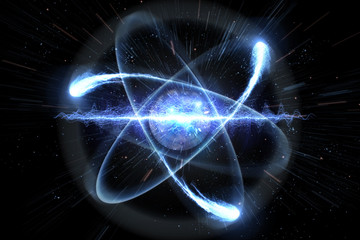What is Atomic Mass ?
Atomic Mass
 |
Atomic Mass |
We are clear with the way that, all issue is made out of molecules. It is essential to find out about the different attributes of an iota and related viewpoints that structure the establishment for science. In the event that molecules are so little, do you figure they would convey some mass? Give us a chance to attempt to interpret this reality in an exact way and get familiar with atomic mass.
Introduction to Atomic Mass
Atoms are the littlest segments that structure a concoction component. Or then again, we can consider it the littlest substance that can't be portioned into easier material. It is essential to take note of that, particles hold explicit properties that assistance to decide their physical and concoction nature. One of its properties named as atomic mass is generally proportional to the aggregate of the discrete molecule masses of a particle.
A molecule has three fundamental segments: to be specific, protons (+ particles), neutrons (impartial particles), and electrons (- particles). In an iota, protons and neutrons are viewed as the bigger particles which are available inside the core (the center of molecule). In this manner, atomic mass is fundamentally determined with the expansion of various neutrons and protons together, keeping aside the electrons because of their little size.
Also, Dalton is the standard unit used to gauge this mass. Continuously recall that the atomic mass of a particular molecule will differ contingent upon the quantity of neutrons and protons. Further, it would be distinctive for each individual component.
Atomic Mass Models
For carbon, the atomic mass is 12.011; most carbon particles hold 6 protons and 6 neutrons. Advancing, the atomic mass of hydrogen is 1.0079. Here, hydrogen (with atomic number 1) conveys the most reduced atomic mass. Likewise, the most well-known hydrogen isotope is protium, which comprises of a solitary proton or an electron and proton.
Because of the nearness of the little measure of deuterium (1 neutron and 1 proton) and tritium (1 proton and 2 neutrons), hydrogen has an atomic mass impressively more noteworthy than 1.
Strategies to Compute Atomic Mass
Look for Atomic Mass Utilizing Occasional Table
In the event that you are new to this subject, at that point your educator would definitely need you to become familiar with the utilization of the occasional table. This is the advantageous method to locate the atomic mass of a particular component. The number by and large is composed beneath a component's picture or image is the atomic mass. Do look for the decimal number, for example the weighted normal of the atomic masses for all the common isotopes related with the component.
This esteem referenced in the intermittent table is fundamentally in amu or atomic mass unit. Be that as it may, for science estimations, one must utilize the atomic mass written in g/mol (grams per mole).
Expansion of Protons and Neutrons Thinking about a Solitary Molecule
For ascertaining the atomic mass for a solitary particle, you have to include the mass of neutrons and protons. For example, you need to locate the atomic mass of an isotope of carbon which has 7 neutrons. In the wake of taking a gander at the intermittent table where carbon has an atomic number 6, that is, characterizing the quantity of protons. Consequently, the atomic mass of the carbon particle is the mass of neutrons in addition to the mass of protons, 6 + 7 = 13.
Weighted Normal for All Particles Present In a Component
For a component, the atomic mass is the weighted normal of all the component's isotopes relying upon their standard wealth. Commonly, so as to ascertain the atomic mass utilizing this strategy, you will be offered a rundown of isotopes alongside their mass and regular wealth (decimal or percent esteem).
You just need to duplicate each isotope's mass with its bounty. In the event that your wealth is accessible in percent, remember to separate your answer by 100. At last, include the qualities together and the appropriate response is the all out atomic mass of the component.







No comments